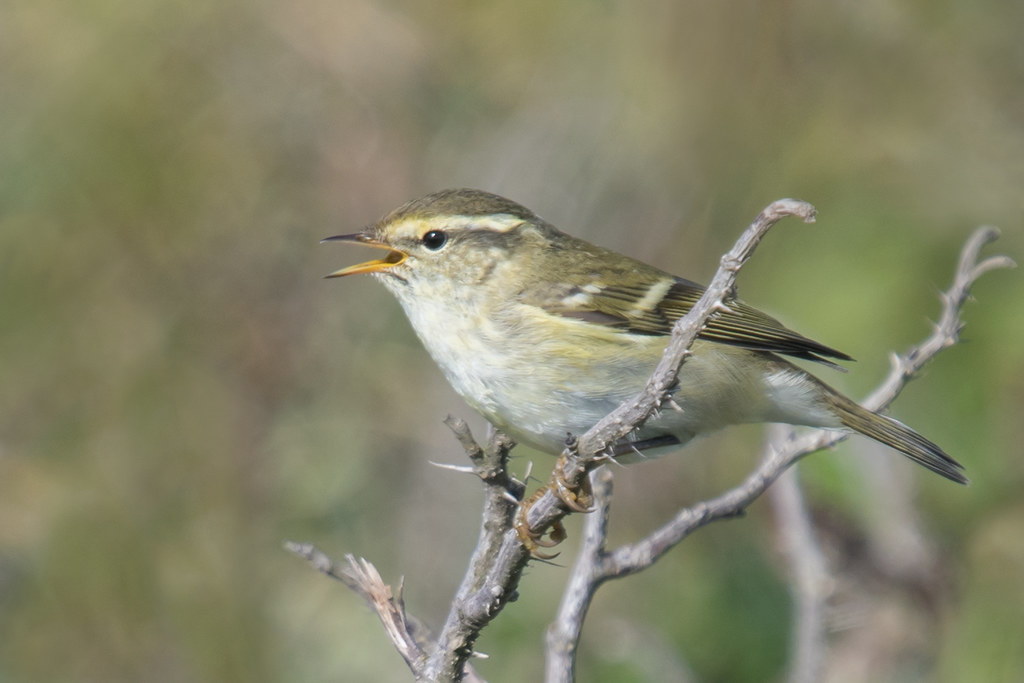
Tim writes: Yellow-browed Warbler is a puzzling bird in many ways. Its closest breeding area is just west of the Urals, which is at least 3000km from Britain, yet hundreds turn up in Britain each year, particularly in autumn. The species breeds right across the taiga zone and winters widely in Nepal, southern China and the Malay peninsula. So birds would generally fly about 6000km southeast to reach their wintering grounds. So why do hundreds fly 3000km west (ie the wrong direction) to reach Britain? I wonder if there is now an undiscovered wintering area in Africa that has established recently and so these “vagrants” reaching Britain are just stopping off on their normal migration to Africa. At least one Yellow-browed Warbler has occurred in Senegal in December.
Anyway there were an unbelievable 27 Yellow-browed Warblers in the Spurn area on 28 September when I took this, and I managed to find two of these myself as I was wandering along the peninsula. They are small birds, considerably smaller than a Chiffchaff. Its scientific name, Phylloscopus inornatus, is also a bit of a puzzle. Phylloscopus means leaf-gleaner and it is the same genus as Chiffchaff, Willow Warbler and Wood Warbler. But inornatus means undecorated or inornate, yet it has more stripes and bars than its undecorated cousins. That is because when Edward Blyth first described it new to science back in 1842, he thought it was a type of Goldcrest but lacking the golden crown. So Blyth named it Regulus inornatus, the undecorated Goldcrest or Kinglet.
[registration_form]
Lovely phot of the true harbinger of autumn passage on the east coast or Northern Isles, these days whilst still a special bird to see autumn for many of us is incomplete without seeing one.
Tim – I’ve seen a few of these but the best was the most recent which was on 20 October 2018 in central London, not far from St James’s Park as I walked to the RSPB’s AGM of that year. It shows that birding isn’t something that many of us can turn on and off – we are always birding. Yellow-browed Warblers weren’t on my mind as I walked past the Royal Society but I heard a call that immediately made me wonder what it was, and after a while I realised what it must be and eventually saw the bird, without binocuilars, well enough to be sure. A treat, and a different experience from searching Wells Wood or similar location for the same bird.
Glorious that a thing that small can fly that far – astonishing really